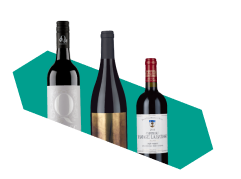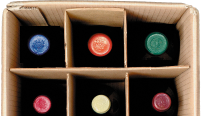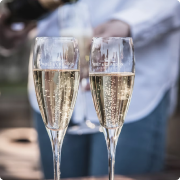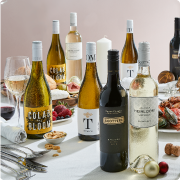Say bonjour to Bordeaux, home to some of the world’s most celebrated wines. From silky smooth reds and vibrant whites to lusciously sweet dessert wines, there’s a Bordeaux bottle to suit every taste.
Here at Laithwaites, we’ve got a soft spot for Bordeaux – after all, it’s where we started. Back in the 1960s, Tony Laithwaite spent his summers as a student working in the vineyards of Bordeaux. There he developed a deep love for the region’s distinctive red wines. This passion led to the creation of Bordeaux Direct in 1969. The following years saw Tony collecting wines from Bordeaux (then all over France) and driving them back to the UK in his Ford van. The rest, as they say, is history.
But back to Bordeaux …
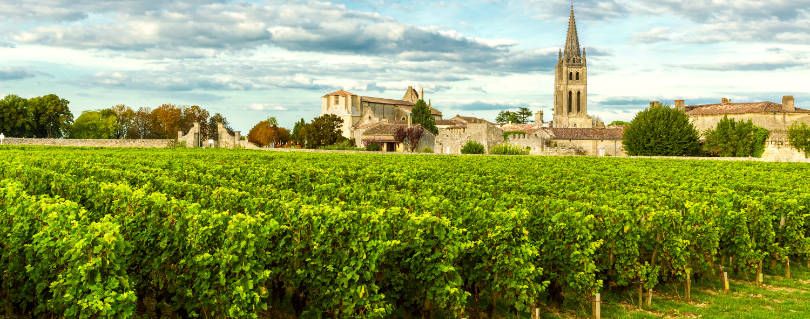
Discover the Bordeaux wine region
Located along the southwest Atlantic coast, the Bordeaux wine region is arguably France’s most famous and prestigious. It’s globally renowned for its exceptional red wines, known for their elegance, complexity and remarkable capacity for ageing. Although red wine is responsible for 85% of the region’s total wine output, Bordeaux also takes pride in its distinct white, rosé and sweet dessert wines.
Fancy a trip back in time?
Bordeaux’s winemaking adventure began in 60 BC when the Romans planted the first vineyards. The region’s fertile land, climate and proximity to the Gironde estuary, a key trading route, quickly made it a major player in the wine world.
Today, Bordeaux is a busy hub of winemaking, with almost 9,000 winemakers spread across 57 wine appellations. The region’s maritime climate of mild winters and warm, sometimes changeable summers allows the wine grapes to ripen fully yet maintain a refreshing level of acidity.
Divided by the Gironde River, Bordeaux offers two different wine experiences. The ‘Right Bank’ is home to renowned wineries such as Château Pétrus and Le Pin. The soil here is rich in clay and limestone, and Merlot is the dominant grape variety.
The ‘Left Bank’ is known for its grand wine châteaux in prestigious wine regions such as Margaux, St. Julien, Pauillac and St. Estèphe. Here, Cabernet Sauvignon thrives in the gravel soil. This grape is often blended with Merlot, Petit Verdot and Cabernet Franc to create a complex and flavourful wine.
Exploring the famed Bordeaux blends
Bordeaux is famous for its wine blends. The classic Bordeaux red blend, replicated worldwide, combines four of the region’s leading grapes: Cabernet Sauvignon, Merlot, Cabernet Franc and Petit Verdot. Occasionally, you might also find traces of Malbec and Carmenère.
Over on Bordeaux’s Left Bank, Cabernet Sauvignon takes the lead in wine blends. It boasts enticing flavours of blackcurrant, cedar, graphite, liquorice and mint. The best of these wines can age well for many years and often don’t hit their stride for at least a decade.
On the opposite Right Bank, Merlot takes centre stage. This grape is often combined with Cabernet Franc, adding freshness and a hint of bell pepper. The Merlot blends are wonderfully rich and luxurious with smooth, silky tannins and juicy cherry, plum and fig notes. The best ones can age for decades.
White Bordeaux wine, also known as Bordeaux Blanc, is a dry white usually made from Sauvignon Blanc and Sémillon. Widely underrated globally, Bordeaux Blanc delivers massively on the flavour front, boasting appealing notes of lemon, pineapple, peach and fresh grass. The most complex among them can age gracefully, developing smoky, creamy and tropical fruit flavours over time.
The region’s sweet wine – Sauternes – is made from Sauvignon Blanc and Sémillon grapes that have been affected by ‘noble rot’. This results in unique flavours of apricots, honey, peaches, dried pineapple, marmalade and baking spices.
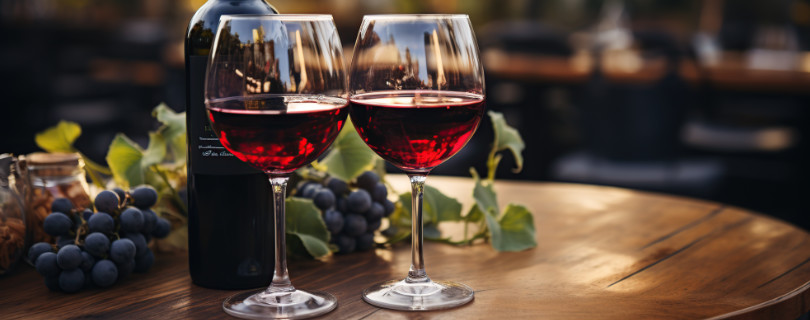
The key appellations in Bordeaux
Bordeaux has one of the most complex appellation systems in the world with many producing some of the best Bordeaux wines available. The region is home to more than 60 appellations – a legally defined and protected geographical area used to identify where the grapes for a wine are grown. Each appellation has unique regulations and characteristics that dictate the types and styles of wine it produces.
Some of the key appellations include:
Médoc: Known for its powerful, full-bodied red wines, the majority of which are Cabernet Sauvignon dominant.
Haut-Médoc: A sub-region of Medoc, it’s home to world-famous appellations such as Margaux, Pauillac and Saint-Julien.
Graves: Located southeast of Bordeaux city, this area is named after its deep, gravelly soils. It is known for its deep, dark red and rich, dry white wines.
Margaux: Wines from here are known for their silky texture, elegance and floral aromas, thanks to the region’s pebble-rich soils.
Pauillac: Home to influential wineries such as Lafite, Latour and Mouton Rothschild, its rich wines are made from grapes nurtured in well-draining gravel soils.
Saint-Julien: Home to red wines made from grapes grown in gravel and underlying clay-limestone soils that blend the strength of Pauillac with Margaux’s elegance.
Saint-Émilion: A World Heritage site on Bordeaux’s Right Bank known for its elegant Merlot-dominant wines.
Pessac-Léognan: Just south of Bordeaux city, this area is home to unique flinty wines due to the mineral-rich gravel soils and the esteemed Château Haut-Brion.
Pomerol: The smallest appellation in Bordeaux, some of the most coveted wines in the world are here. Merlot grapes benefit from iron-rich clay soils, producing powerful wines with irresistible depth.
Saint-Estèphe: The northernmost appellation in Bordeaux is known for its savoury, earthy wines with plenty of tannins, influenced by a slightly cooler climate and gravel/clay soils.
Understanding Bordeaux’s classifications
Bordeaux is classified in more detail than any other wine region in the world. Five different classifications cover its appellations:
1855 Classification
Saint-Émilion Classification
Graves Classification
Cru Bourgeois Classification
Médoc Cru Artisans Classification
The 1855 Classification is the most famous wine ranking in the world. Created for the 1855 Paris Exposition at the request of Napoleon III, it ranked 57 Médoc wines and one Graves wine, Château Haut-Brion, into five levels based on their market prices.
At the top are the five ‘First Growths’ – Lafite, Latour, Margaux, Mouton Rothschild and Haut-Brion. Beneath these, the remaining Classified Growths are divided into Second, Third, Fourth and Fifth Growths, reflecting their market demand and prices. Only one change has been made since 1855 when Mouton Rothschild became a First Growth in 1973.
Now with 61 châteaux, due to subdivisions, the 1855 Classification has solidified the status of the First Growths. Their investment appeal remains unrivalled, but ‘super’ second estates such as Cos d’Estournel, Léoville-Las Cases and Ducru-Beaucaillou are gaining interest among wine collectors.
Pairing food with Bordeaux wines
When it comes to food pairings, Bordeaux wines offer great versatility.
Red Bordeaux blends, both Left and Right Bank, pair well with hearty red meat dishes. Steak, lamb, venison and other game meats pair exceptionally well with these red wines due to their robust flavours and tannin structure. Bordeaux’s earthy notes complement dishes featuring mushrooms and hard and aged cheeses such as Gouda, Cheddar or Comté.
White Bordeaux pairs well with fresh salads, seafood and chicken dishes due to its acidity and freshness. Consider risotto, seafood pasta and roast chicken.
Sauterne works well with all types of desserts and blue cheese. A classic French pairing is foie gras as the sweetness cuts through the richness of the pâté. The wine also complements other types of meat-based pâtés, especially if they include sweet or fruity elements.
How to serve Bordeaux wine
To enjoy your wine at its best, it’s worth paying a little extra attention to how you serve French Bordeaux wines.
First, get the temperature right. With a red blend, aim for around 15-18°C. Too warm, and the alcohol becomes pronounced. Too cold, and you’ll mask its intricate flavours.
Bordeaux wines, especially the reds, benefit from decanting. This allows the wine to breathe, softening the tannins and letting the layered flavours blossom. Gently pour the wine into a decanter and let it rest for at least an hour.
Pour into a large, wide-rimmed glass to allow the wine to release its delicious aromas and flavours.
White Bordeaux should be chilled to about 7-13°C and served in a smaller, narrower wine glass to catch its more delicate aromas.
After opening, Bordeaux wines can last 1-3 days if adequately resealed and stored in a cool, dry place.
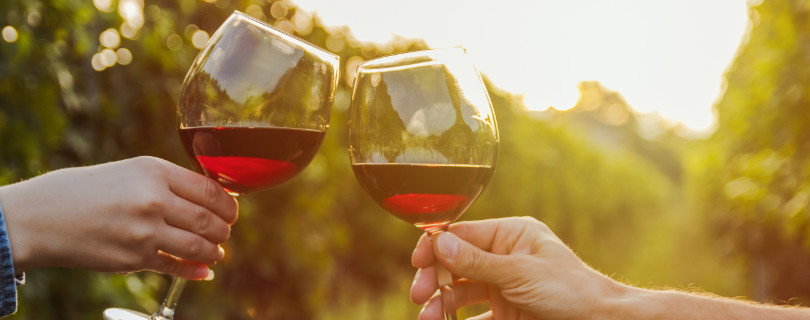
Shop our range of wines from Bordeaux.


